Where is submandibular gland Located and what are its dimensions?
Submandibular gland is a mixed type of gland (contains both mucous and serous acini) but is predominantly serous in nature.
Location: It is located in the anterior part of digastric triangle partly deep in the submandibular fossa of mandible and partly below the mandible.
Size and shape: It is of the size of a walnut and weighs approx.10-20gms.
What are the parts of submandibular gland?
Parts: It consists of two parts:
- Large superficial part: It fills the anterior part of digastric triangle and lies superficial to mylohyoid muscle.
- Smaller deep part: It lies deep to mylohyoid. It is continuous with the superficial part around the free posterior margin of mylohyoid.
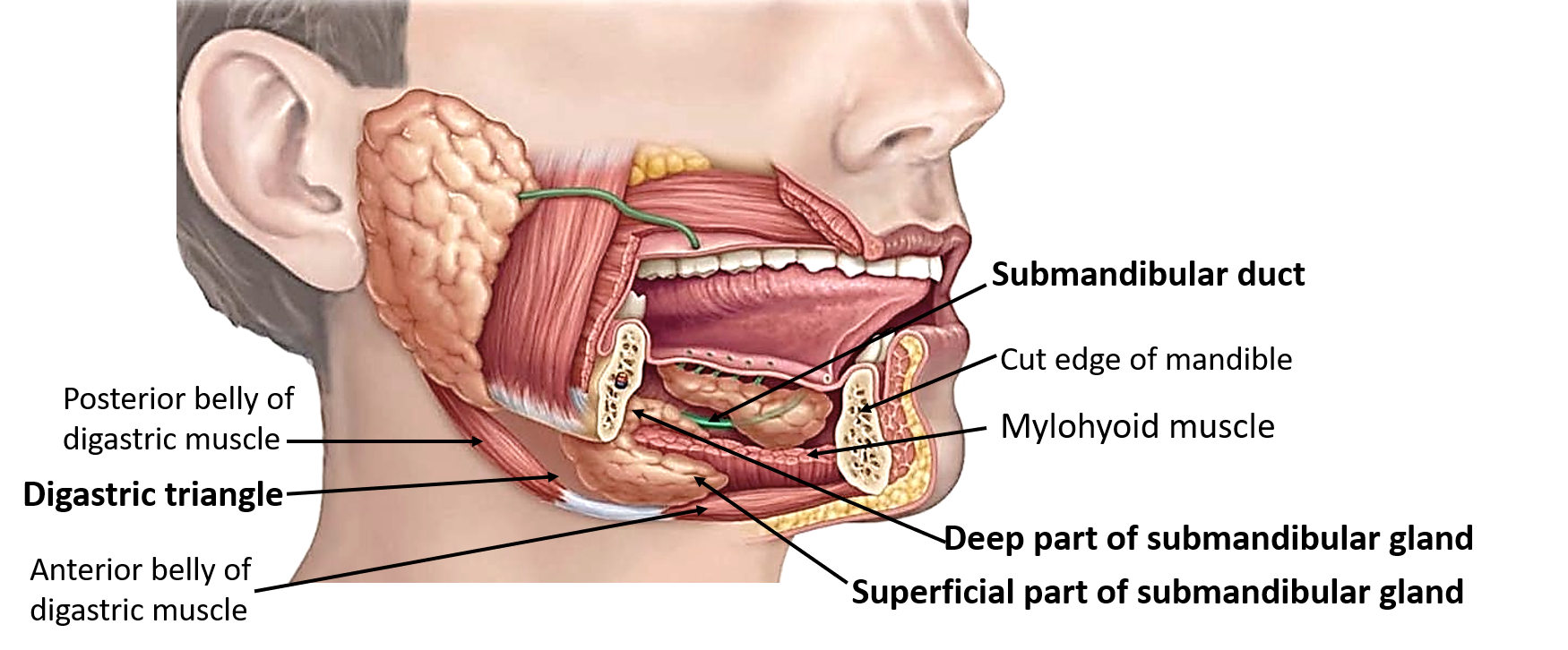
Describe the Gross Features and Relations of Submandibular Gland
Superficial part of submandibular gland fills the anterior part of digastric triangle and extends upwards deep to mandible till the mylohyoid line. It has three surfaces i.e. superficial (inferior), lateral and medial.
Relations of Superficial Surface
Superficial (inferior) surface is covered by the following structures from superficial to deep:
- Skin
- Superficial fascia containing platysma and marginal mandibular branch of facial nerve
- Investing layer of deep cervical fascia
- Facial vein
- Submandibular lymph nodes
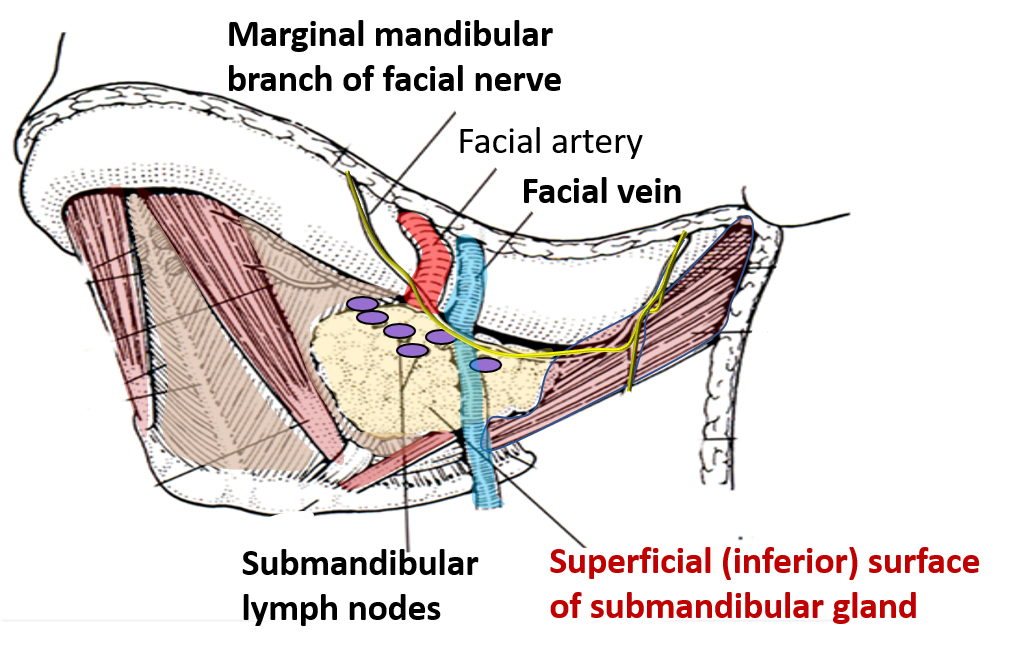
Relations of lateral Surface
Lateral surface is related to:
- Submandibular fossa of mandible
- Medial pterygoid muscle
- Facial artery
Relations of Medial Surface
Medial surface: can be divided into three parts:
Anterior part is related to:
- Mylohyoid muscle
- Mylohyoid nerve and vessels
- Submental artery
Middle part is related to:
- Hyoglossus muscle
- Lingual nerve
- Submandibular ganglion
- Hypoglossal nerve
Posterior part is related to:
- Styloglossus muscle
- Middle constrictor of pharynx
- Glossopharyngeal nerve
- Stylohyoid ligament
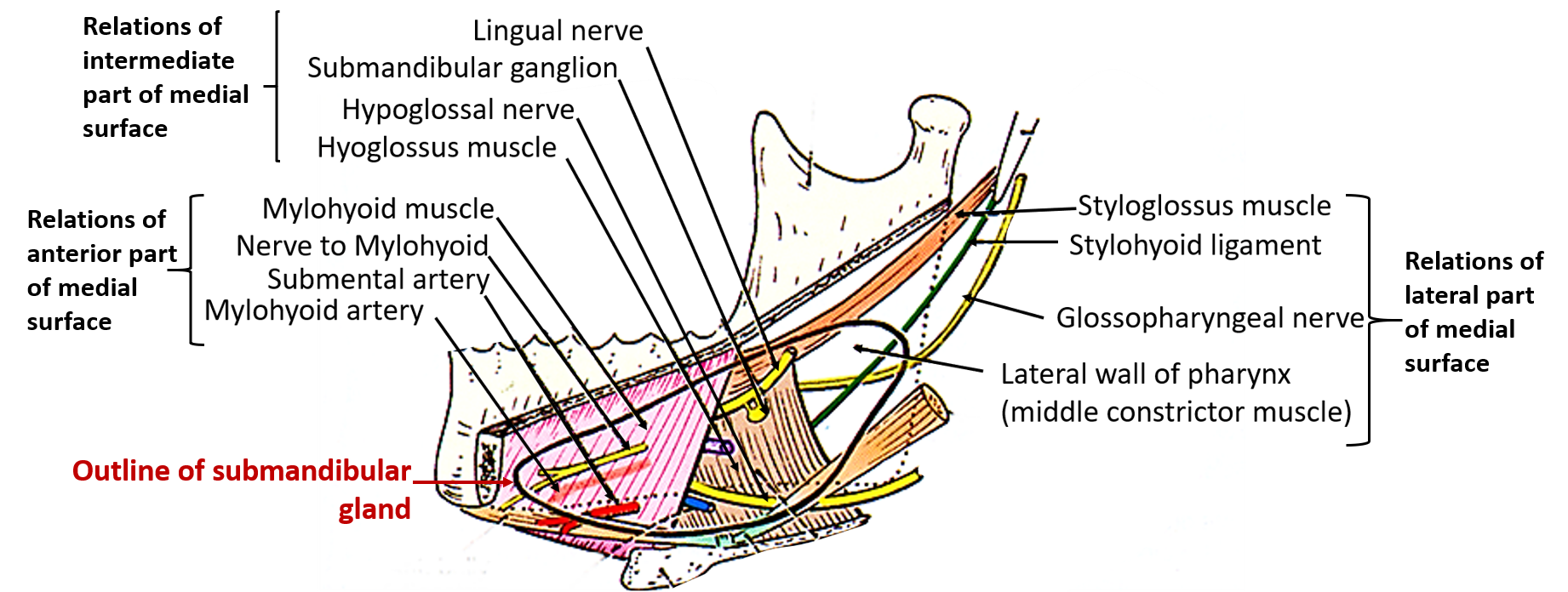
Deep part of submandibular gland:It lies on the hyoglossus muscle deep to mylohyoid. Anteriorly it extends up to the sublingual gland and posteriorly it is continuous with the superficial part.
Submandibular (Wharton’s) duct
- Submandibular duct is 5cm. long
- It begins on the medial surface of superficial part (at the posterior border of mylohyoid).
- It enters deep part and then emerges from the anterior end of deep part.
- It thend runs forwards on hyoglossus muscle & is crossed by lingual nerve from lateral to medial side).
- It continues forwards and upwards between the genioglossus muscle and sublingual gland.
- It opens in the floor of mouth at the summit of sublingual papilla lateral to frenulum of tongue.
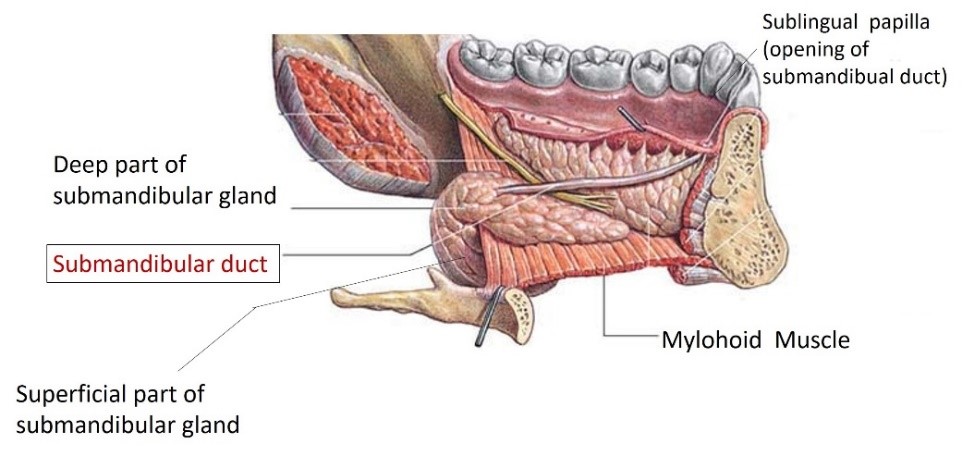
Describe the Nerve Supply of submandibular Gland.
Submandibular gland is supplied by branches from submandibular ganglion carrying following fibers:
- parasympathetic (secretomotor),
- sympathetic and
- sensory fibers.
Parasympathetic (Secretomotor) fibers: Preganglionic fibers originate from superior salivatory nucleus in pons. they pass successively through the facial nerve and a branch of facial nerve viz. chorda tympani. Chorda tympani joins lingual nerve and the fibers relay/synapse in submandibular ganglion. Postganglionic fibers arise from the ganglion and supply the submandibular gland.
Sympathetic fibers: Preganglionic fibers originate from the lateral horn of T1 spinal segment, relay in superior cervical sympathetic ganglion and the postganglionic fibers form plexus around facial artery and supply submandibular gland.
Sensory fibers arise from the lingual branch of mandibular nerve.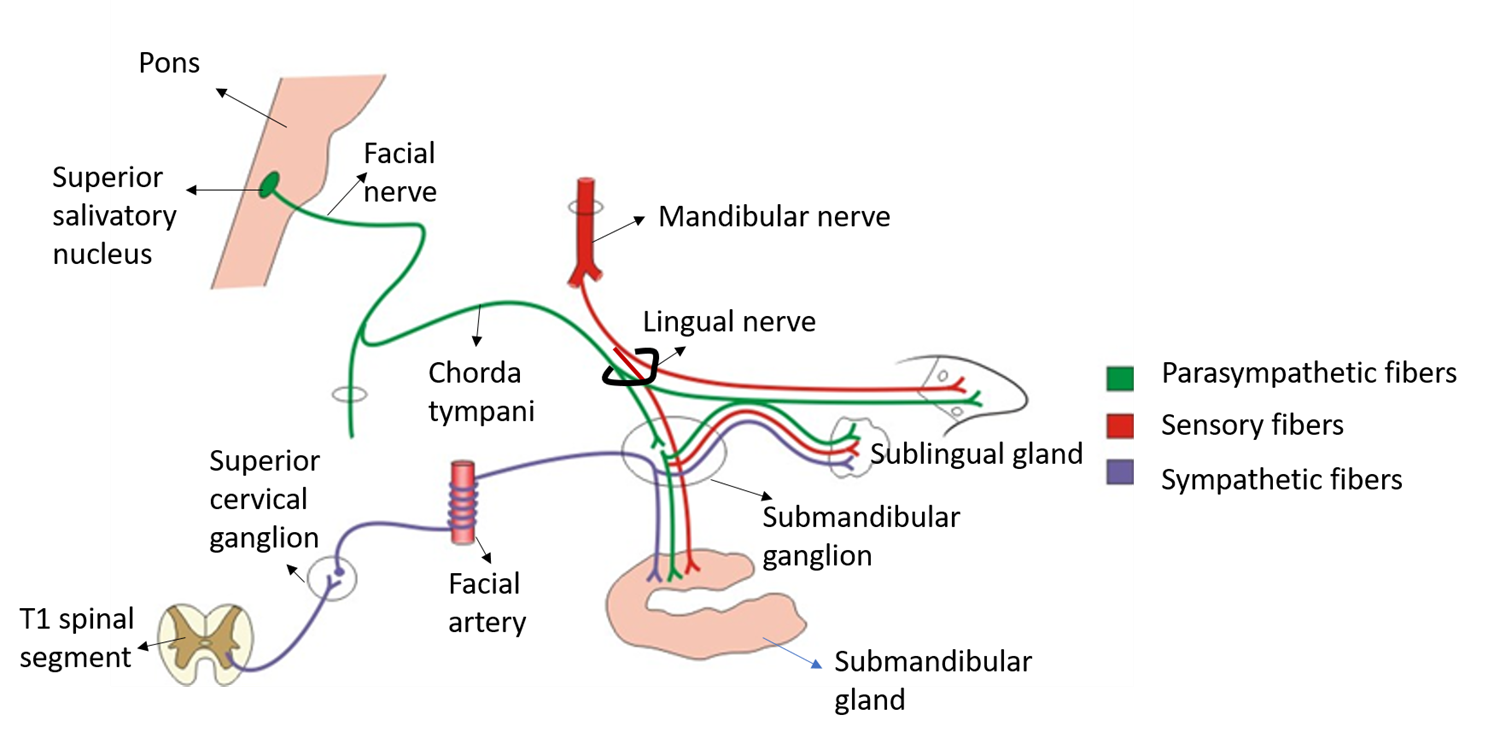
*Parasympathetic stimulation generates watery secretion (rich in enzymes), whereas the sympathetic fibers stimulate secretion that has more of mucus. Sympathetic supply is also vasomotor.
Applied Aspects
Formation of calculi is more common in submandibular duct than in parotid duct.
It is because the submandibular duct ascends to open into the floor of mouth (against gravity) which affects drainage. Secondly its secretion is more
In case of excision of submandibular gland the skin incision should be given an inch below the angle of mandible.
The incision would be 4-5 cm below and parallel to lower border of mandible to save marginal mandibular and cervical branches of facial.
How can the swelling due to enlarged submandibular lymph nodes be differentiated from the swellings of submandibular gland?
Swellings of submandibular gland can be palpated bimanually by putting index finger in the floor of mouth and thumb below the lower jaw in front of angle of mandible because deep part is palpable from oral cavity and superficial part from outside.
Whereas, the enlarged lymph nodes can be palpated only from the outside, below the lower jaw.

Good